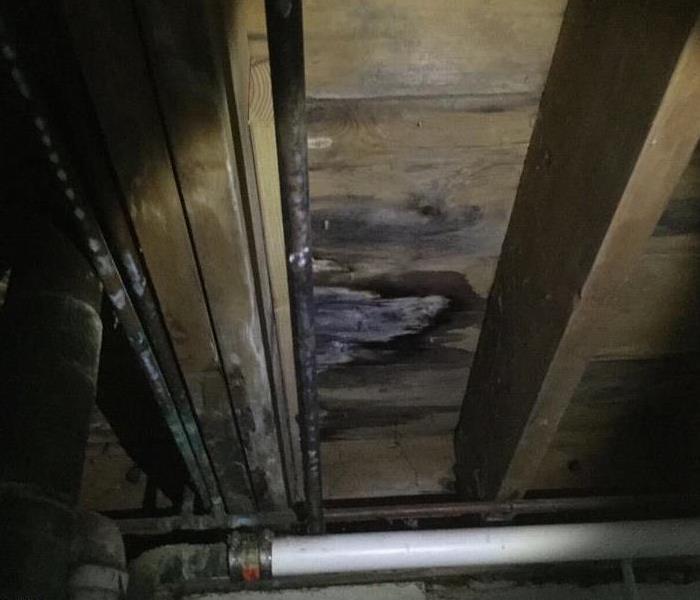Things to look for when buying a house.
8/7/2018 (Permalink)
If you would like to sort of a “pre-inspection” before calling in the professionals, here’s a list of things to look at to know if you’re possibly buying a house with mold:
- Does the house have wet carpet or water stains.
Carpeting and carpet padding are great mold foods and mold growth can easily hide inside carpeting and padding. - Does the home have indoor bodies of water?
An indoor pool, jacuzzi spa or large fish aquarium continuously generates high indoor humidity to drive mold growth. - Is there a built in humidifier?
As humidifier pushes moisture and humidity throughout the house, this increases the chances of indoor mold growth. This is true for humidifiers that are built into the home’s heating/cooling equipment and free-standing, portable units. - Does the refrigerator have an automatic ice maker?
Water supply line that brings water to an automatic ice maker often goes bad. A bad water supply line causes leaking water and could promote mold growth into kitchen floors, walls, and cabinets. - Does bathroom and laundry vents lead outdoors?
Such vents often exhaust high humidity air into attics, crawl spaces, walls, ceilings, or floors, rather than directly outdoors. Be sure that these vents are leading outdoors to prevent moisture build-up. - Does the air conditioning condensation pan have a leak?
Air conditioning systems include a drip pan to catch water than condenses and drips from the air conditioning coils. Such drip pans are sometimes poorly installed or the pan drain pipe becomes blocked, thus allowing water flooding and mold growth into adjacent walls and ceilings. - Does the building lot slope towards the house?
If the house building lot slopes downward toward the house, rather than away from the house, there is going to be significant water intrusion into the basement, crawl space, concrete slab, and/or building foundation, and thus enabling the growth of mold resulting from such water intrusion. - Does the house on the side or bottom of a hill?
A residence that is located on the side of a hill or at the bottom of a hill will be a moldy house because rain fall will cause significant ground water intrusion into the same areas mentioned above. - Is the roof overhang too short?
If the roof overhang extends less than two feet beyond the walls beneath the overhang, rainfall will fall upon and run down the exterior walls to soak into the wood and masonry surfaces of such walls. - Has the house ever had a leaky roof?
If the roof surface or flashings around a chimney or furnace and plumbing vent pipes are degraded or poorly-maintained, water will enter into the home’s attic and run downward into the insides of the ceilings, floors, and walls beneath the attic to cause huge, hidden toxic mold growth therein. - Has the house ever had a crawl space water intrusion?
Most crawl space dirt floors suffer from water wicking upward from the ground water in the soil. In addition, rainfall frequently runs into crawl spaces. Crawl space water intrusion results in big toxic mold growth that can grow upward into the insides of the floors and walls above. - Does the house have leaking water supply or sewage drain pipes?
Plumbing line leaks can cause massive toxic mold growth inside and on walls, ceilings, and floors.




 24/7 Emergency Service
24/7 Emergency Service
